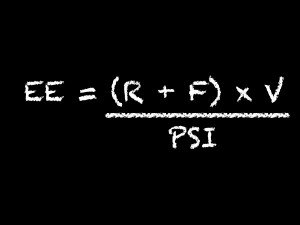The Employee Engagement Equation

Employee Engagement at an organizational level is really about “how we create the conditions in which employees offer more of their capability and potential.”
In the Urban Dictionary, “algebraic” roughly translates to some event or action so unbelievably awesome—and it has absolutely nothing to do with math!
Is there an “algebraic” formula for managing Employee Engagement? I would argue yes. In fact, I have seen this formula work time and time again in my many years of being led, leading others, and working to develop leaders in both the non-profit and for-profit fields.
Employee Engagement at an organizational level is really about “how we create the conditions in which employees offer more of their capability and potential.” As David MacLeod writes in Engage for Success, employee engagement cannot be seen as an add-on to their jobs, but as an integral part of their daily activity at work.
Now, let me give you a fair warning: If an employee’s motivation comes from external forces and that force subsides, so too does the motivation. Just like a competitor who is competing for a cash prize and the cash prize is suddenly eliminated, so too is the competitor’s motivation to compete. They may even withdraw from the competition entirely. The same applies for an employee who doesn’t develop the motivation from within.
Some employers, if desperate in the short term, could even manipulate an employee’s commitment and emotions to improve performance and productivity, but sadly these sorts of actions would only back fire and lead to cynicism and demotivation. Manipulation never prospers.
What we know is that high employee engagement yields low employee turnover. Peter Diamond explains the concept for Entrepreneur, “Most people quit a job because they can no longer tolerate their boss or they have lost faith in senior management…Conversely, people will stay at a company or in a job during thick and thin if they respect and believe in their boss.”
What is this algebraic formula that can help leaders and senior managers to enhance productivity and performance, lower employee turnover, and help people to believe in their leader(s), even when they are asking them to do more with less?
Employee Engagement =
Relationship: the quality of an employee’s relationship with her leaders.
- Does she feel connected to them?
- Does she trust them?
- Does she believe they are all working for the same side?
Feedback: According to Ken Blanchard, “Feedback is the breakfast…of champions!” It is also a critical ingredient for a fully engaged employee.
- Is the feedback timely, specific and genuine?
- Do endorsements (positive comments) exceed (constructive) feedback?
- Is feedback consistent, both during good and difficult times?
Vision: both the quality of an employee’s relationship with the leader and the leader’s consistent, genuine feedback allow the employee to have a clear understanding of where she fits into the organization’s success. By having a clear vision of her contribution to the company’s success, she should understand the context for why she should follow the leader and why she should care about feedback. As she receives continued feedback and develops a further relationship with the organization’s leaders, the connection to the overall vision will only multiply.
Personal Self–Interest: whether perceived or actual, personal self-interest can destroy any attempt at increasing employee engagement if the employee thinks a leader is just in it for himself—a divisive quality no matter what the extent of self-interest. The more present self-interest is at a company, the more divided the engagement becomes.
Employee Engagement is equal to the quality of your relationship with your employees and the feedback you share with them, within the context of a shared, inspiring and clear vision, in service of the organization and others and not your own personal self-interest.
So next time you or one of your employees does something really awesome and you want to praise her, in addition to being timely, specific and genuine of course, you could end with a closing word for a job well-done, in your best 90’s teen voice and say: “That was algebraic, dude!”


